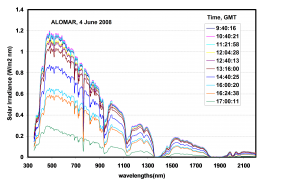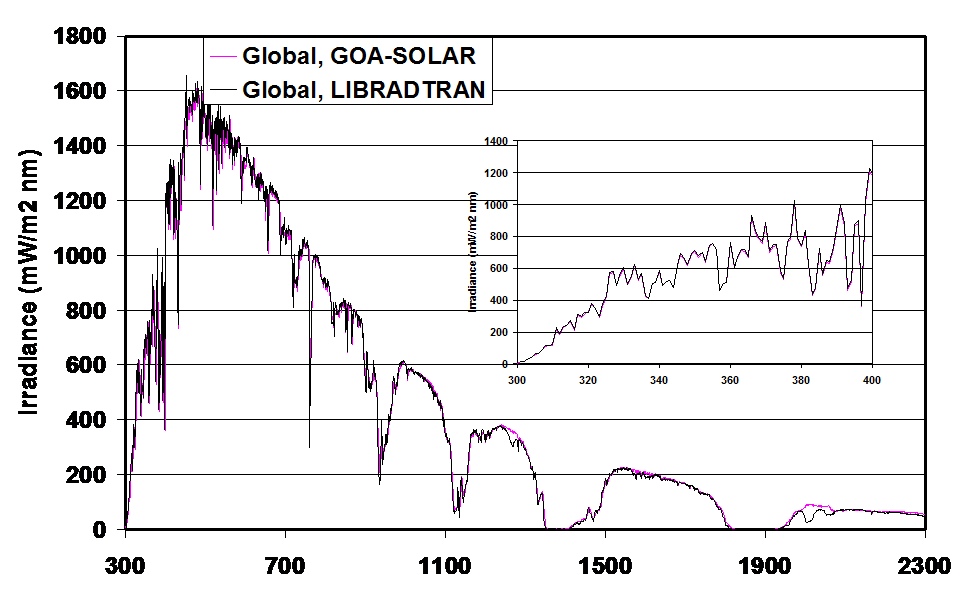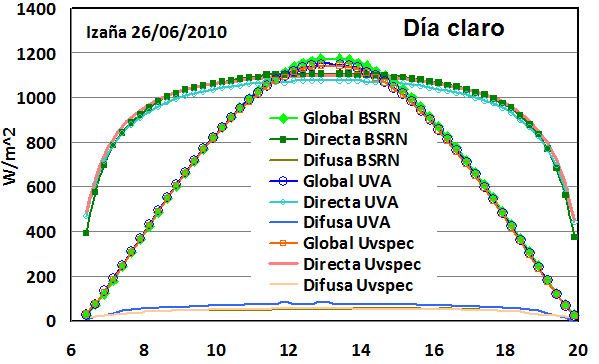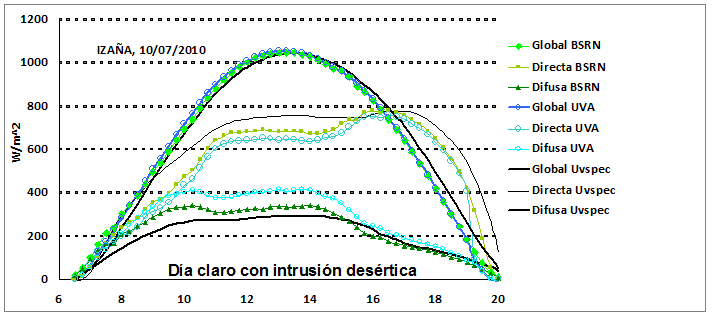
Spectra of global solar irradiance measured by the ASD Field Spec spectroradiometer at ALOMAR station (Norway)
Spectral shortwave radiation measurements in the UV-VIS-NIR using two spectroradiometers such as LI-1800 (300-1100nm) and ASD Field Spec (350-2500nm), are currently available for laboratory measurements, field campaigns, etc.
Direct, diffuse or global component of radiation can be measured. During the last three decades GOA has gained a great expertise in this type of solar spectral irradiance measurements, making a wide data-base in many different areas of Spain and Europe.
In parallel different radiative transfer models (RTM) have been used, like LibRadtran, LOWTRAN, 5S, etc., in order to compare with experimental measurements. As part of this experience, specific and adapted solar radiation models were developed, for instance the UVA-GOA model, that covers the spectral range between 290 and 400 nm, and the SOLAR-GOA in the range 300-2600 nm. Some example results of these model-measurements intercomparisons are shown below.

Global spectral irradiance obtained by SOLAR-GOA and LibRadtran models.
GOA-UVa also works with integrated solar radiation data provided by our station at Valladolid and by other stations. Since 2008, in close collaboration with the CIAI-AEMET, we work with the BSRN station of Izaña Observatory. The main application of these data is the atmospheric component determination: aerosols, water vapor or ozone. Furthermore, these data can also be used in the context of solar energy, agricultural or other environmental applications.


Daily evolution of integrated solar radiation measured at BSRN station
at Izaña and simulated by SOLAR-GOA and LibRadtran:
a) cloud-free conditions;
b) cloud-free conditions with dust Saharan intrusion.
